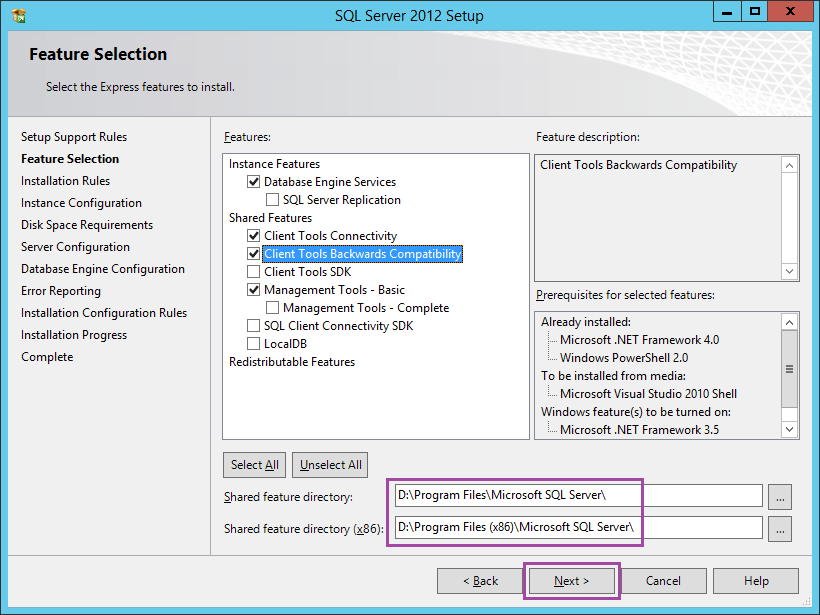
- #Install sql server 2014 on d drive how to
- #Install sql server 2014 on d drive install
If you will just be using one instance on the server, you can go with the default instance option, otherwise, use named instances. You connect to SQL Server by specifying the server name or IP, along with the instance name (i.e. You connect to SQL Server, by only specifying the server name or IP (i.e. In this dialog, you are presented with 2 options: 

The nest step in the installation process, is the instance configuration options. Installation Process – Instance Configuration

#Install sql server 2014 on d drive install
Install only the features you need – C drive can be used for the above paths. Instance root directory, Shared feature directory, Shared feature directory (x86). Client Tools Connectivity, Integration Services, etc. Database Engine Services, Replication, Full-Text Search, etc. This is the process, where among other, you select which features of SQL Server to install.īelow, I list the sub-steps of this process, along with providing the best practices recommendations. The first step when you begin the SQL Server installation process, is the feature selection. ( Lifetime Access, Certificate of Completion and more) This course, is a complete beginners guide that helps you get started with SQL Server, SSMS and Azure Data Studio fast and easy. Using the above tool, you can get useful performance info about the storage/disks you will be allocating for SQL Server, and thus check if the available throughput will be adequate for your SQL Server instance’s performance needs.Ĭheck our online course, titled “ SQL Server Fundamentals – SQL Database for Beginners“. Best Practice: Usually, a 64KB allocation unit size is used for data, logs, and tempdb file drives. Best Practice: Make sure that you plan for the right disk capacity for your data, logs, backups and tempdb files. To this end, you need to make sure that you are allocating an adequate amount of CPUs and RAM, based on the estimated workload to be processed by SQL Server.Īlso, regarding storage, please check the below recommendations. The first thing to do for installing a new SQL Server instance, is not the installation process itself, but rather perform the proper planning. I’ providing these best practices, following step-by-step the dialogs presented by SQL Server’s installation wizard (i.e. This first course is for beginners, and the second course, covers many intermediate to advanced SQL Server administration topics. #Install sql server 2014 on d drive how to
Both courses contain useful lectures and many live guides, that will help you learn how to efficienly perform a variety of tasks in SQL Server. The list of best practices presented in this article, is not exhaustive, but I believe, they help a lot, towards efficiently installing a new SQL Server instance.Īlso, if you are looking for additional knowledge on how to efficiently work with SQL Server, you might want to check my online courses “ SQL Server Fundamentals (SQL Database for Beginners)” and “ Essential SQL Server Administration Tips“. Via this article, I will be sharing with you, some useful tips regarding SQL Server Installation and Setup Best Practices. However, efficiently installing SQL Server, is a whole different story.

Installing SQL Server, especially on standalone servers, is a relatively easy process.








 0 kommentar(er)
0 kommentar(er)
